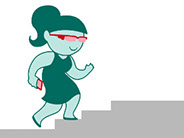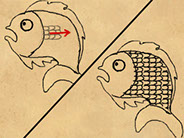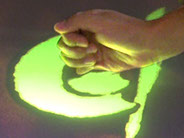Research Projects
-
Follow-My-Lead
Indoor navigation on smartglasses without the need for localization or floorplan data. Followers view a recording of what they should see while they walk toward their destination. Fast video transitions between checkpoints give users the information they need without the need to constantly attend to or interact with the interface. Recording of paths is made easier through video checkpoints. Experiments showed that this design was strongly preferred to existing methods.
-
CoFaçade
CoFaçade is a novel approach to helping elders use their IT products by working collaboratively with helpers. Elders control their products by pressing buttons or tapping cards on a hand-held trigger interface. Helpers use a simple customization interface to link these triggers to procedures that can operate any computer application or remote-controlled consumer electronics device. Experimental results showed that CoFaçade can reduce helpers’ time and effort, reduce elders’ frustration, and improve elders’ success rate in completing IT tasks.
-
Vignette
Vignette removes the tedium of adding textures to hand-drawn illustrations. An illustrator begins by sketching a scene to establish global layout. Then she can draw a small patch of texture and use a gesture to fill the region with that texture. Finally, the texture can be refined by changing density and curvature or by adding a perspective tilt. Users of Vignette said that the tool made the illustration process more enjoyable and inspired them to explore more design possibilities.
-
Sand Canvas
SandCanvas is a tabletop system for creating visual performance art in the style of sand animation. SandCanvas simulates the feel of real sand and simplifies many tasks faced by sand animators, such as video mixing and frame-by-frame animation recording. But SandCanvas goes beyond the traditional form with new capabilities, such as real-time recording and playback of gestures during performances. Study participants used these novel features to make compelling visual performances, and they reported that SandCanvas was a pleasure to use.
-
K-Sketch
K-Sketch is a “kinetic” sketch pad that helps novices create simple animations for use in education, design, or social interaction. Objects are sketched and motions are performed by hand, transforming a complex problem into a simple one. Analysis of 72 rough 2D animation tasks showed that 18 simple operations could be used to perform the entire set of tasks. As a result, K-Sketch users can perform more tasks in less time with less learning time and cognitive load than with conventional tools.
-
SketchWizard
Designers often use Wizard of Oz prototypes to collect feedback on an interface that appears complete, even though it is being operated by someone “behind a curtain.” SketchWizard brings this technique to sketch-based interface design. Designers and end users share a drawing canvas between two computers, allowing the designer to simulate the behavior of recognition or other technologies. Special editing features help designers respond quickly to end-user input. In studies with SketchWizard, end users gave valuable feedback and did not realize that their interfaces was controlled by a designer.
-
NotePals
NotePals helps teams pool their experience by sharing their typed or handwritten notes. Users take notes on hand-held devices that capture contextual information, such as author and creation time. These notes are then uploaded to a shared web repository where they can be viewed alongside collaborators’ notes and other relevant documents, such as conference papers and lecture slides. NotePals users took nearly 3200 pages of notes in the first 18 months of the system’s deployment and found new value in their notes when they were combined with their colleagues’.







